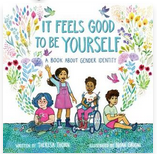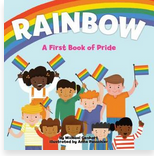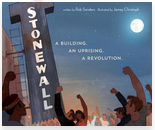 Kuklin, Susan. Beyond Magenta: Transgender Teens Speak Out. Candlewick Press, 2014. $22.99. 182p. HC. 9780763656119.
Kuklin, Susan. Beyond Magenta: Transgender Teens Speak Out. Candlewick Press, 2014. $22.99. 182p. HC. 9780763656119.
Beyond Magenta profiles six trans teens who discuss their gender identities, family relationships, transition processes, experiences with societal acceptance and rejection, and plans for the future. Each profile references a participant’s many interests and identities without downplaying the importance of their trans identities. Most of the participants are also
represented by excellent photographic essays, which offer compelling glances into their personalities.
Kuklin includes a small amount of commentary from herself and people close to the teens, but the book’s focus always remains on the teens’ often emotional stories and experiences. She has worked closely with participants to “make sure that everything written was honest and authentic” and carefully avoids inserting her voice into the teens’ narratives. Some readers may wish that Kuklin had edited the material more aggressively, however, so that the narratives flowed more smoothly.
Beyond Magenta‘s contributors represent an inclusive cross-section of the trans community. Several of them identify as people of color; and they express a number of different gender identities, including binary (trans women and men) and non-binary (gender queer and gender fuck) identities. One intersex teen also shares their story in the book. Each one analyzes gender
and sexuality differently, and some readers may find some of their analyses stereotypical or reductive. It’s important to remember, however, that teens–both cisgender and transgender–are often working to develop an understanding of societal gender roles and how they relate to them. The comments shared in this book are honest expressions of that process.
Some readers might also wish to see more representation of rural teens’ experiences; all except one of the participants was recruited through the Callen-Lorde Community Health Center, giving the book a strong focus on the New York metropolitan area. While it is impossible for six teens can truly represent the experiences of all trans youth, Beyond Magenta can be commended for offering an inclusive and thoughtful set of perspectives.
After the teens’ powerful stories, Kuklin’s bibliography is a disappointment. The first book mentioned is J. Michael Bailey’s The Man Who Would Be Queen, which has been widely discredited for its blatant transphobia, unscientific assertions, and breaches of research ethics.
Except for this regrettable selection, the bibliography appears to be intended for people rearing or researching trans children rather than for trans teens and their friends. Notably, Kuklin includes only one YA fiction book in her bibliography, though several excellent titles featuring trans protagonists have been published in recent years (Cris Beam’s I am J and Kristin Cronn-Mills’ Beautiful Music for Ugly Children spring immediately to mind).
Kuklin’s book can serve as a good introductory resource for family members of trans and questioning teens as well as for teens interested in learning more about their trans peers’ experiences. Beyond Magenta leaves something to be desired, however, as a resource for trans youth themselves. The teens’ stories, while powerful, lack context. Kuklin includes a short section on the medical aspects of transition but includes nothing about trans politics, culture, history, legal issues, or sexuality. Each of these would have provided additional insights on the book’s narratives.
While it is heartening to see trans teens represented in first-person narrative form, this reviewer hopes that this is but one of many opportunities for trans youth to share their stories in print.
Jane Sandberg, Librarian
Burlington (WA) Public Library



